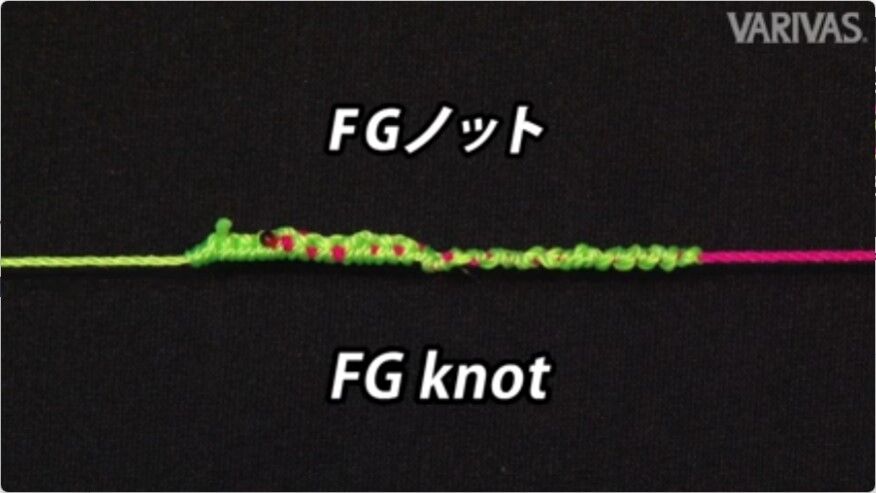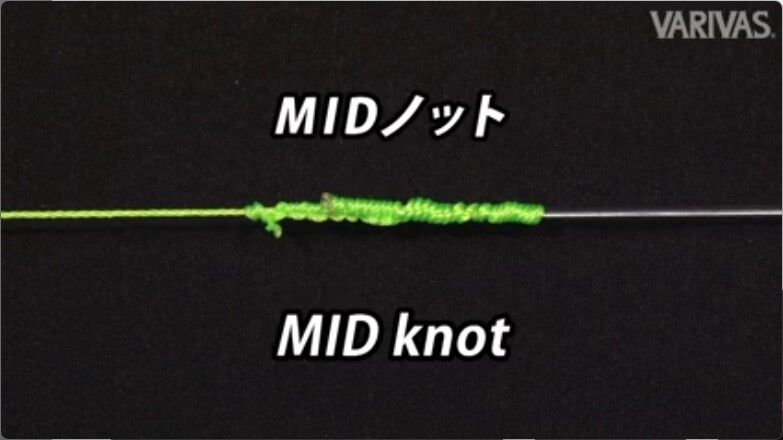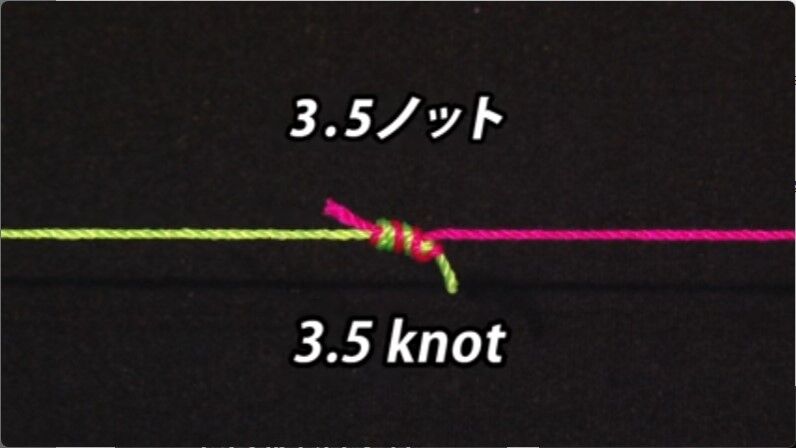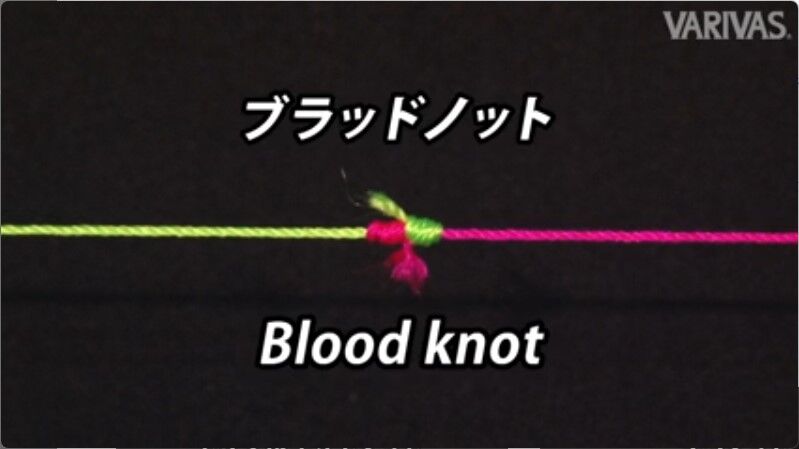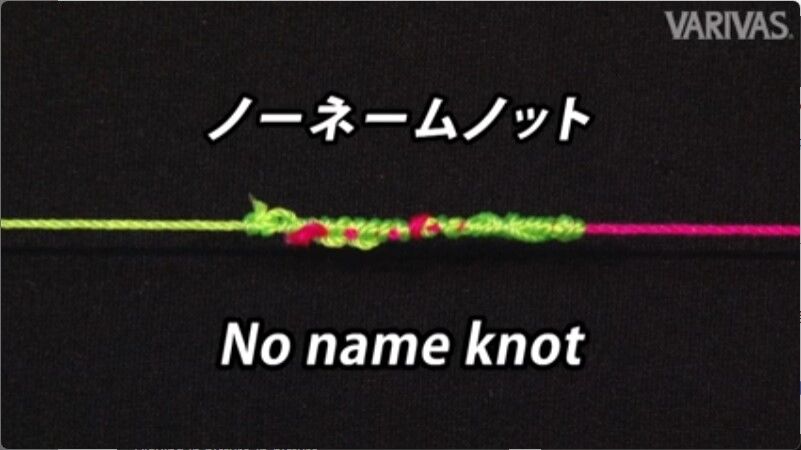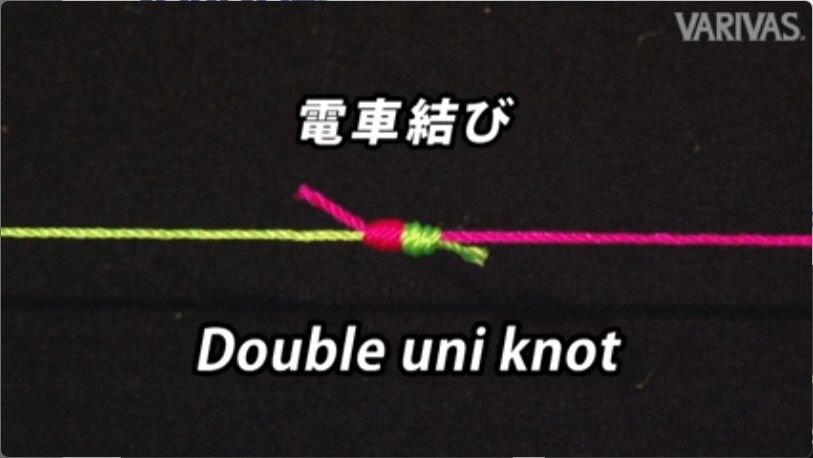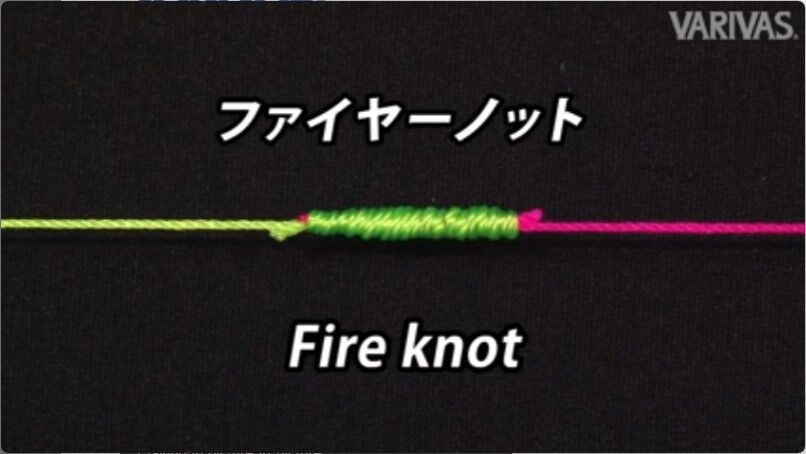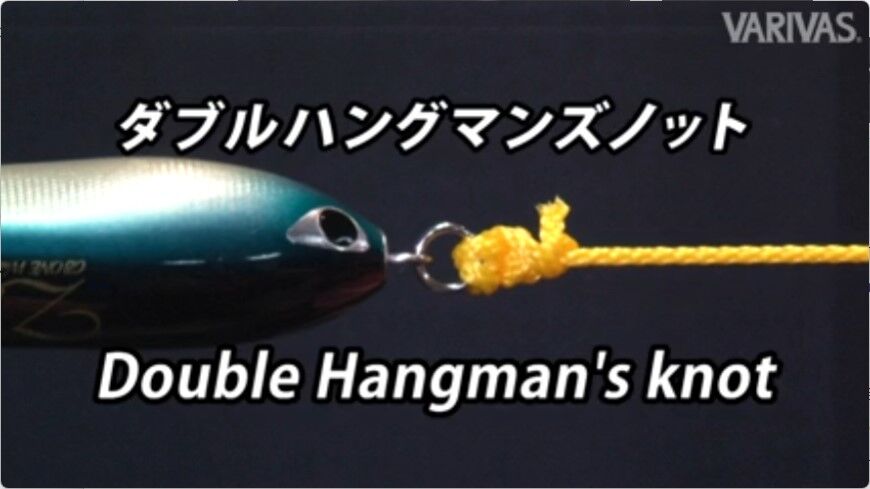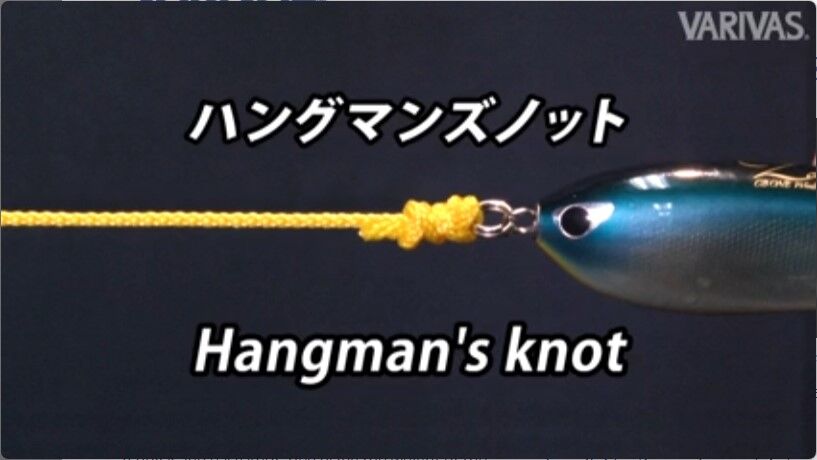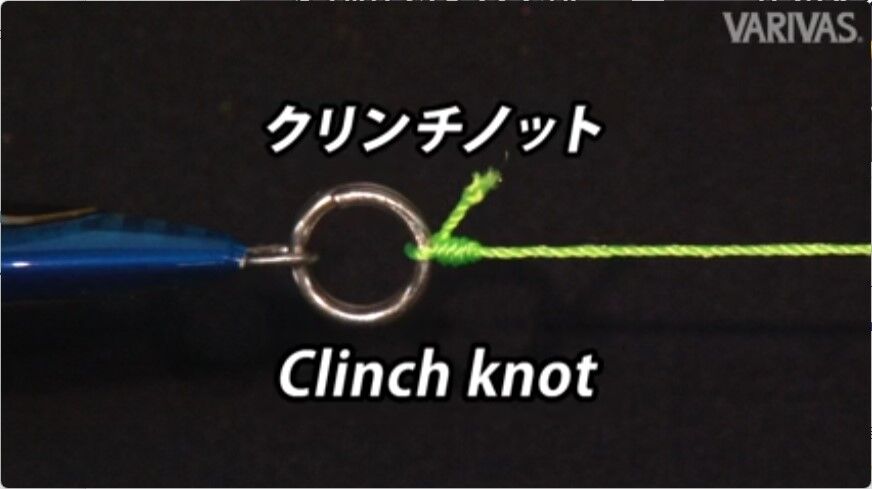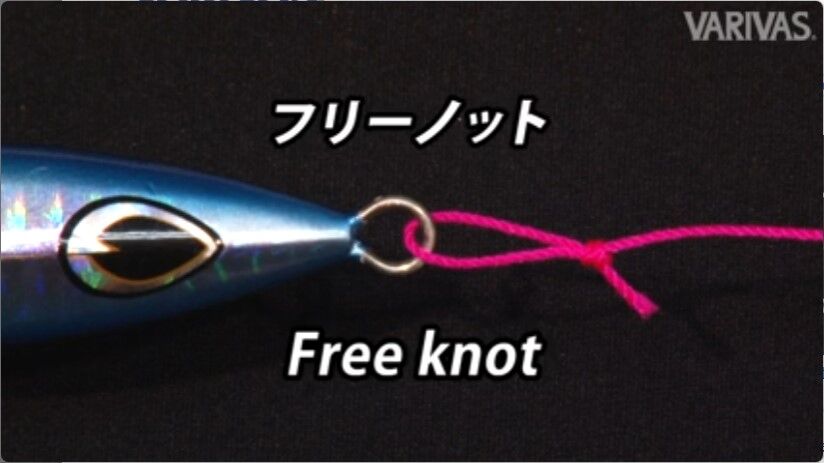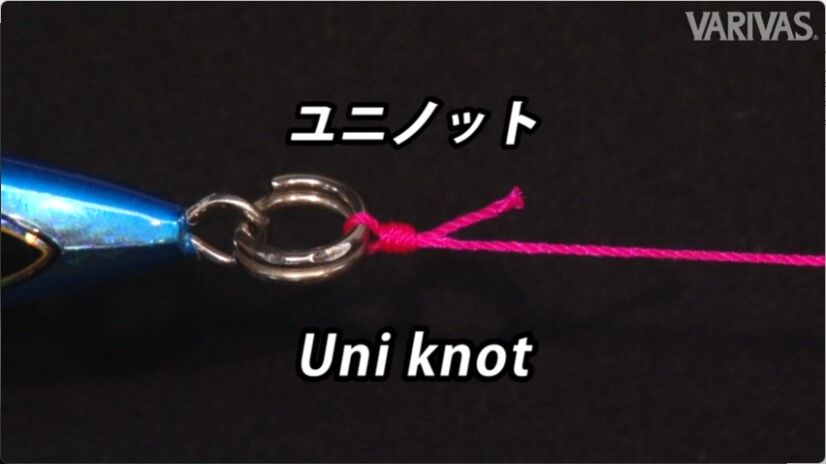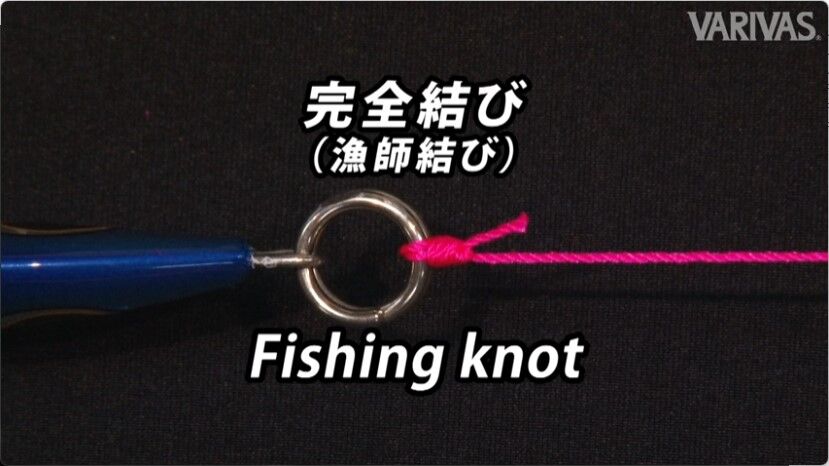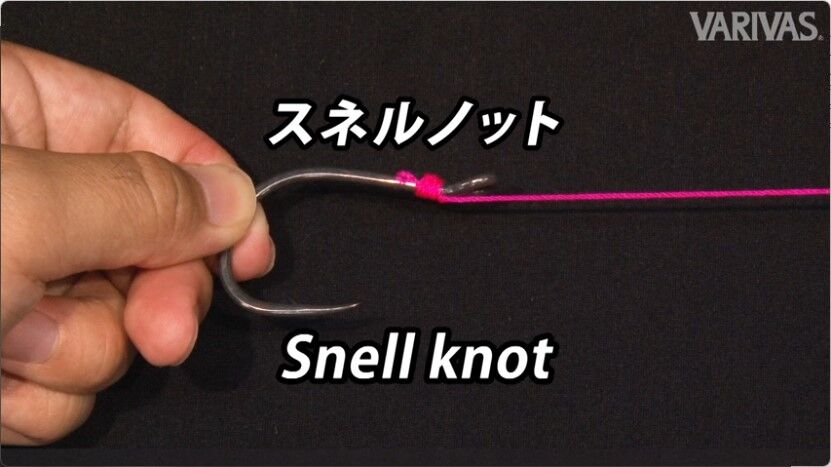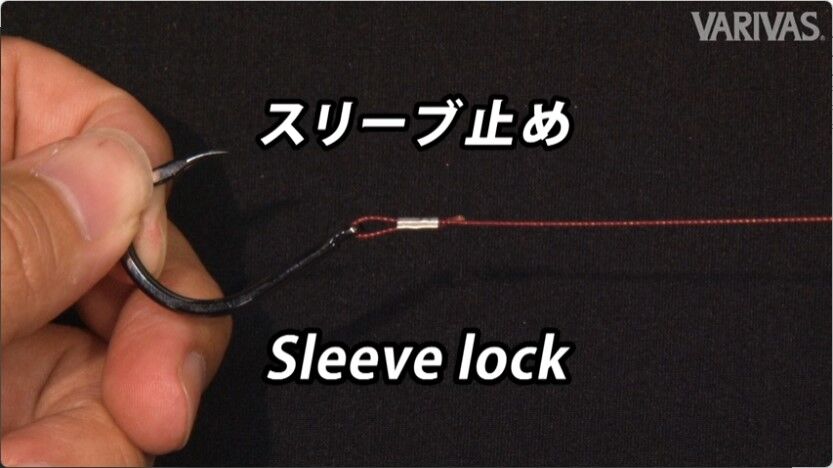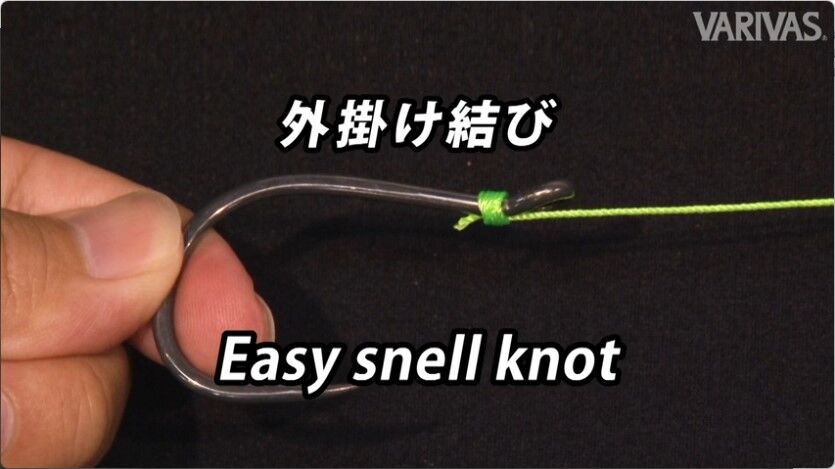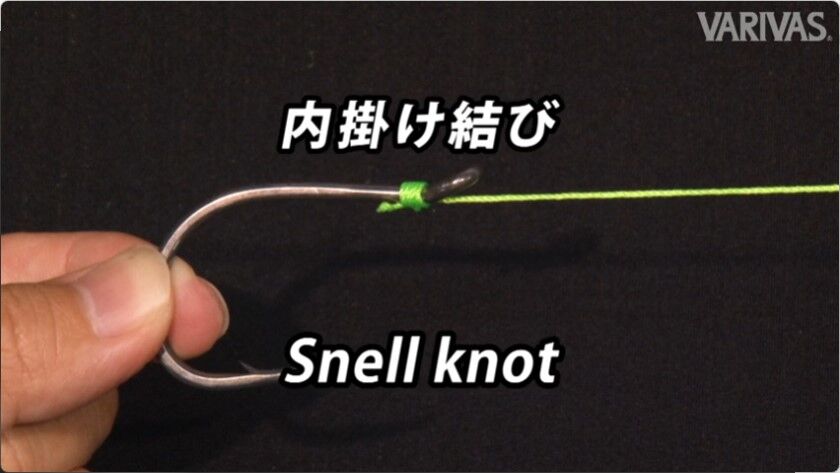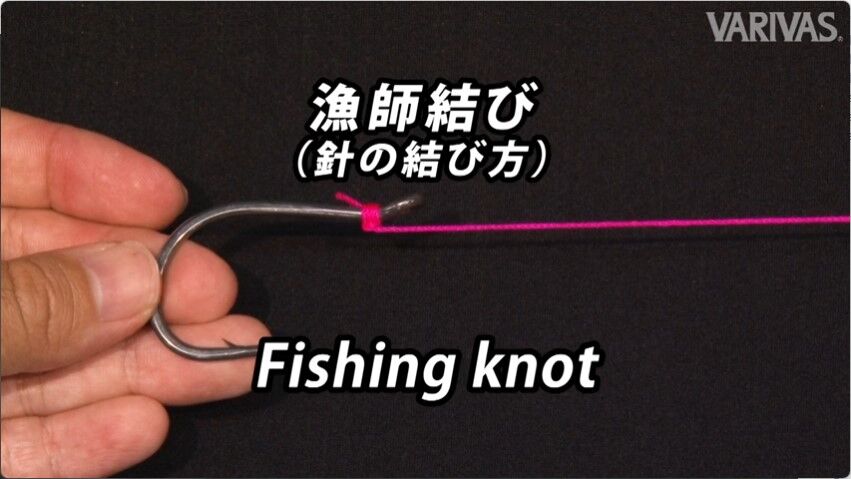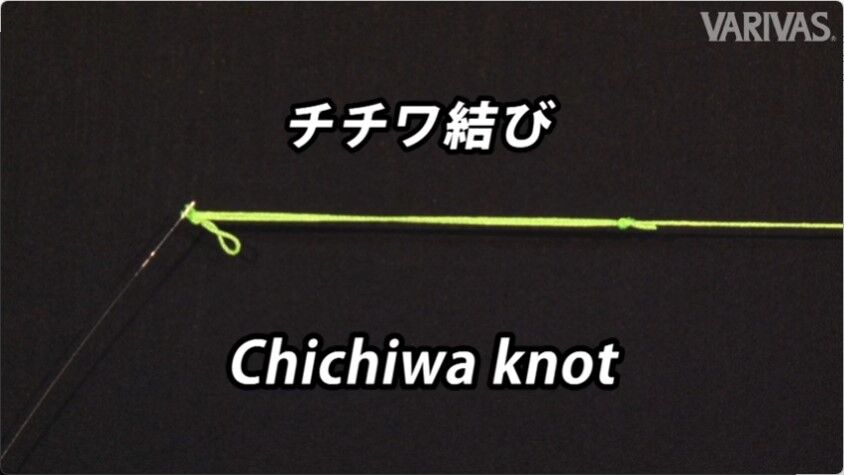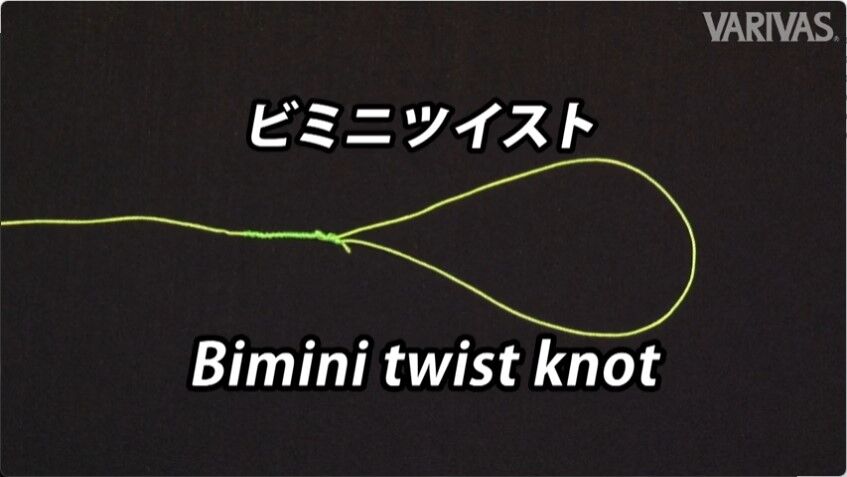
How to tie knots
Video series of fishing knots ranging from simple to more advanced knots.

Knots for connecting two lines to one another
Connection knots for connecting PE/braid to leader line and mono nylon main line to leader.
Surgeon's Knot
Surgeon’s Knot (also known as a Double Surgeon’s Knot)
One of the easiest, most reliable knots to tie. An excellent knot for tying thin diameter lines, 2 lines with moderately different diameters, or joining 2 lines of different materials.
A Surgeon’s Knot consists of 2 overhand knots with the entire leader pulled through the knot each time.
A Triple Surgeon’s Knot involves 3 wraps of the loop through the Overhand knot.
Recommended for Ajing lines, Area Trout lines, and connecting tippet to leader.
Figure 8 Knot
Used for connecting a line to a leader, or to make a knot that fastens to Tenkara rod tip.
Recommended for stream/river fishing and Tenkara.
FG Knot
A popular low profile, smooth knot for connecting PE/braid to leader.
This knot relies on a friction system, whereby the PE braid main line is wrapped by the leader line.
A strong, reliable knot for all types of line. Can be used with nylon mono, braid and fluorocarbon.
Recommended for trout, bass, seabass, egging, and offshore fishing lines.
Mid Knot
A friction knot similar to the FG knot that connects PE braid to leader. Tightening a Mid knot is easier than with FG knots; however, it takes a bit of practice to master this knot.
Recommended for sea bass, egging, and offshore fishing lines.
SF Knot
Strong, reliable knot.
Not suitable for thick leader line, as this produces a knot that is too thick.
Recommended for Sea bass, Egging, & Jigging style lines.
Albright Knot
A popular, versatile knot that has a wide range of uses. Suitable for joining different types of fishing lines, e.g., Monofilament to Braided or Braided to Wire. It is a valuable knot when joining the line with different diameters. It is commonly used to join the fly line to the backing line but can be used whenever you wish to join two fishing lines together.
Triple 8 Knot
An easy knot, often used for trout and light game fishing along with the Surgeon’s knot.
Easily loses its shape when twisted 3 times; thus the trick is to hold the twisted part firmly with your fingers.
3.5 Knot
A knot that can be tied quickly in the field. Essentially a Surgeon’s Knot with an added step to ensure that the knot doesn’t pull out.
Recommended as a connection knot for thin lines.
Used in Ajing and Area Trout fishing.
No Name Knot
No Name Knot (also known as the Bristol Knot or Figure 8 Round Knot)
It is a basic knot for connecting PE/braid to leader.
Offers an easy, streamlined method to connect a shock line or tippet to a doubled line such as a Bimini Twist. It will pass through rod guides smoothly and can also be effective for attaching braided lines to monofilament.
Make a Figure 8 Knot with a leader, then wrap it with the PE braided main line.
Loop to Loop Knot
The Loop to Loop Knot is not really a knot per se. It is a method of joining or interconnecting two loops and is often referred to as interlocking loops. The loop to loop connection is exceptionally strong.
Recommended for Sea Bass, Egging and Fly fishing.
Knots for connecting line to rings.
Connecting line to snaps, rings, and hooks.
Double Uni Knot
Double Uni Knot (also known as a Double Hangman’s Knot)
A quick and easy knot, tied using the weight of the lure. To avoid trouble tightening the knot when passing the line twice through the eye, we recommend moistening the line and shaping it while tightening the knot.
Adjustable Loop Knot
Traditionally known by the gruesome name, Hangman’s Loop Knot, this adjustable loop knot can be used for attaching terminal tackle that benefit from fluid action, such as certain types of baits or lures that require greater range of motion in presentation.
If the lure is not heavy enough, the lure may not turn or move freely enough. Therefore when tying this knot to a snap, attach the lure first before starting to tie this knot.
Recommended for all types of lure fishing.
Double Clinch Knot
The Double Clinch Knot is a time-tested and a very popular choice for tying terminal tackle to monofilament or fluorocarbon line.
Considered by many anglers to be one of the most versatile knots you can learn.
Triple Overhand Knot
One of the best and most versatile saltwater big game fishing knots. It’s an extension of the tried and true regular overhand knot and double overhand knot.
To make a triple out of a double, you simply make an additional pass – this makes your knot slightly bigger and more difficult to untie. It is important to note that because of the additional pass through, your triple overhand knot will have a larger profile than either a regular overhand knot or double overhand knot. This large profile creates a cushion and is hard to break.
Uni Knot
Uni Knot (also called a Hangman’s Knot or Duncan Knot)
The Uni Knot is a variation of the Hangman’s Knot.
A fast, easy, versatile fishing knot used with mono, fluoro, or braided line for attaching line to your reel, joining 2 lines together, or for attaching lures, hooks, and swivels to your line.
An excellent knot for beginner anglers.
Palomar Knot
An excellent knot to use with braided fishing line. And a good choice when fishing the popular Ned Rig.
Recommended for most lure fishing.
Not suitable for big baits.
Connection knots for tying line, leader, or tippet to a hook.
How to tie line to baited hooks with an eye or hooks with a spade-end.
Traditional Snell Knot
This fishing knot was originally invented for use with eyeless hooks but it is still widely used today. The Snell Knot aligns the fishing line or leader with the shank of the hook.
Easy and quick to tie.The Snell knot requires wrapping a loop around the fishing hook. When tightening the knot, hold the turns under your fingers to ensure they snug down neatly
Sleeve Stopper Knot
Use a Sleeve Stopper when using a thick line that cannot be tied or when using wire line.
Recommended for Striped Beakfish, Hairtail, and Big Game fishing.
Inner Snell Knot
Along with the Easy Snell Not, the Inner Snell version is a standard knot for connecting line to a hook. The Inner Snell Knot is more stable and stronger than the Easy Snell Knot.
Recommended for Crucian carp, rocky shore, or boat fishing.
Japanese Fisherman's Knot
The Japanese fisherman’s Snell Knot is a fisherman’s knot that has existed since ancient times in Japan. It produces a small profile knot with a unique inward hook angle. It’s quick to tie and minimizes wasted line.
At first glance this knot may appear unreliable. However, it remains popular in Japan.
Recommended for Blackthroat Sea Perch and Flounder fishing.
Connecting to a rod tip
Connecting line to a Tenkara rod or other device.
Double line knots
When extra binding strength is needed, double the tip of the main line to create a double line system.
Connection knot between fly line and leader.
Connecting fly line to tapered leader.
Splice & Nail Knot
A Nail Knot is a good knot for joining two lines of different diameters. It allows you to attach backing to the fly line and the fly line to the leader, or the tippet. The knot derives its name from the use of a nail that originally acted as a guide for making the knot. However, replacing the nail or a needle with a thin hollow tube or straw, makes the tying easier.
Recommended for fly fishing.



